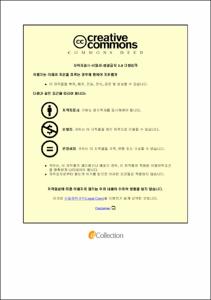물리, 열화학적인 전처리 기법을 이용한 꼬시래기로부터 환원당 생산
- Alternative Title
- Production of total reducing sugar from Gracilaria verrucosa using physical or thermochemical pretreatment
- Abstract
- In this study, I tried to produced total reducing sugars from Gracilaria verrucosa using physical or thermochemical pretreatment and subsequent enzymatic hydrolysis. In first section, physical pretreatment with ultra sonication and subsequent enzymatic hydrolysis of G. verrucosa was investigated. As a result, the pretreatment yield was 32.46 ± 0.32% when 2%(w/v) G. verrucosa was treated with 100 mM sulfuric acid solution and 60% of sonicator at room temperature for 30 minutes. The pretreatment and enzyme hydrolysis yield of reducing sugar was 70.67 ± 1.79% and it took 12 hours to complete the enzyme saccharification. It was concluded that the yield of reducing sugar can be obtained with the same significance level when compared with the pre-treatment yield and enzyme hydrolysis yield using a autoclave. HMF, which is an inhibitory substance, was produced more by high pressure sterilization treatment. Sonicator treatment was also able to reduce the completion time of enzymatic hydrolysis of G. verrucosa by up to 45 hours.
In second section, sulfamic acid-catalyzed hydrothermal pretreatment and subsequent enzymatic hydrolysis of G. verrucosa was investigated. Best pretreatment condition is 7.5% biomass, 100mM sulfamic acid, 90min, 130℃ at this condition. Total reducing sugar yield is 39.9%. By subsequent enzymatic hydrolysis after pretretment, TRS yield was increased up to 69.1%. These results confirm the usefulness of sulfamic acid in pretreatment of G. verrucosa and the possibility of using sulfamic acid in pretreatment of other seaweeds.
- Issued Date
- 2018
- Awarded Date
- 2018.2
- Type
- Dissertation
- Publisher
- 부경대학교
- Affiliation
- 부경대학교 대학원
- Department
- 대학원 생물공학과
- Advisor
- 정귀택
- Table Of Contents
- List of Figures and Table Ⅲ
Abstract Ⅴ
Chapter Ⅰ 물리적 전처리법인 초음파 파쇄처리와 효소 가수분해를 통한 꼬시래기로부터 환원당 생산 1
1. 서론 2
2. 재료 및 방법 4
2.1. 재료 4
2.2. 초음파 전처리 4
2.3. 효소 가수 분해 4
2.4. LV-SEM 5
2.5. 결과 분석 5
2.6. 수율 계산 및 통계처리 5
3. 결과 및 고찰 6
3.1. 산촉매 종류에 따른 환원당 수율
3.2. 전처리 시간에 따른 환원당 수율 9
3.3. 초음파 파쇄기의 출력에 따른 환원당 수율 11
3.4. 기질 농도에 따른 환원당 수율 13
3.5. 산촉매 농도에 따른 환원당 수율 15
3.6. 초음파 파쇄 온도에 따른 환원당 수율 17
3.7. 전처리 시간에 따른 환원당 수율 19
3.8. 전처리 실험조건 최적화에 따른 효소 당화 시간 변화 21
3.9. 고압멸균기 전처리와 초음파 파쇄 처리의 환원당 수율 비교 23
3.10. LV-SEM(주사 전자 현미경) 25
4. 결론 27
참고문헌 28
Chapter Ⅱ Sulfamic acid 전처리 및 효소 가수분해를 통한 꼬시래기로부터의 환원당 생산 30
1. 서론 31
2. 재료 및 방법 32
2.1. 재료 32
2.2. 전처리 과정 32
2.3. 실험 설계 및 통계분석 32
2.4. 효소 가수 분해 34
2.5. Combined severity factor 34
2.6. 분석방법 34
2.7. 수율 계산 34
3. 결과 및 토론 35
3.1. Sulfamic acid를 사용한 G. verrucosa이 전처리 및 가수분해 35
3.2. G. verrucosa의 전처리 효과 37
3.3. G. verrucosa의 전처리 및 가수분해 효과 42
3.4. 반응의 가혹도에 따른 환원당 수율의 영향 46
4. 결론 48
참고문헌 49
감사의 글 53
- Degree
- Master
- Files in This Item:
-
-
Download
 물리, 열화학적인 전처리 기법을 이용한 꼬시래기로부터 환원당 생산.pdf
기타 데이터 / 4.44 MB / Adobe PDF
물리, 열화학적인 전처리 기법을 이용한 꼬시래기로부터 환원당 생산.pdf
기타 데이터 / 4.44 MB / Adobe PDF
-
Items in Repository are protected by copyright, with all rights reserved, unless otherwise indicated.